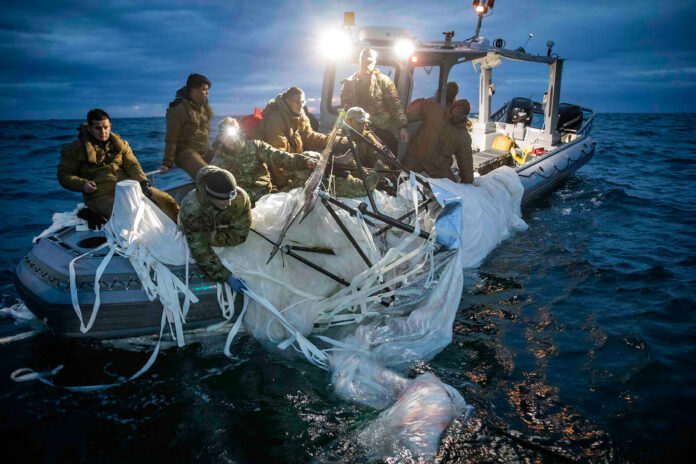
A suspicious balloon launched by the People’s Republic of China crosses North America focusing attention on radar coverage of Canadian and American Arctic regions.
The first balloon arrived on 28 January. Entering United States (US) airspace above the Aleutian Islands in the northern Pacific Ocean, it took a leisurely path into Alaska. Journeying across the Yukon, the balloon entered Canadian airspace traveling through the Northwest Territories and British Colombia. It returned to US airspace on 31 January, moving through northern Idaho and into Montana. Montana is home to the United States Air Force’s (USAF) Malmstrom airbase which is the headquarters of the 341st Missile Wing (MW). This is one of three missile wings which are custodians of the USAF’s Northrop Grumman LGM-30G Minuteman-3 Intercontinental Ballistic Missiles (ICBMs). The Washington Post reported that the balloon loitered for a while in Malmstrom’s vicinity. By 3 February, it had reached northwest Missouri in the Midwest.
The government of the People’s Republic of China (PRC) said the balloon was theirs. However, it denied the balloon was doing anything more nefarious than collecting weather information. Nonetheless, the incident had major diplomatic fallout. US Secretary of State Antony Blinken cancelled a planned trip to the PRC as part of an effort to ease Sino-US tensions. The US Department of Defence (DoD) mounted a major intelligence-gathering effort on the balloon. The USAF revealed that a Boeing RC-135V/W Rivet Joint signals intelligence gathering aircraft was deployed. The aircraft was most probably monitoring the balloon’s communications systems. It was thought to be carrying an intelligence gathering payload which may have included Electronic Support Measures (ESM) and radar. The ESMs may have been attempting to ‘hoover up’ communications and radar intelligence from Canadian and US military sites it flew near.
This raw intelligence may then have been sent across Chinese military or government communications satellites back to the People’s Republic of China. It would most likely be the People’s Liberation Army’s (PLA) Strategic Support Force (SSF) which received and analysed this data. The SSF is a dedicated PLA command tasked with strategic and operational level information warfare. Performing cyber and electronic warfare, the SSF supports the PLA’s other services. The Rivet Joint aircraft may have eavesdropped on these communications or collected raw traffic, sending it to US National Security Agency experts for analysis. Further intelligence was acquired by USAF Lockheed Martin U-2S Dragon Lady reconnaissance aircraft with Boeing E-3G Sentry airborne warning and control jets managing the air operation. By 4 February the balloon was above the eastern seaboard of the US near North and South Carolina. It was later shot down by a USAF Lockheed Martin F-22A Raptor combat aircraft. The balloon’s wreckage landed in the Atlantic Ocean six nautical miles/nm (11 kilometres/km) off the coast.
Although the balloon ended up in bits, it was the prelude to other Unidentified Flying Objects (UFOs) traversing the Canada, Central Europe, Hawaii, Latin America, the PRC and the continental US. A further eight reports of UFOs were made, including some in the PRC, between 2-19 February. Three of the objects crossing Canada and the US were shot down by the USAF. The incidents were reminiscent of Matthias Rust’s famous flight into Moscow’s Red Square on 28 May 1987. Rust was a teenage amateur pilot who flew his Cessna F-172P Skyhawk light aircraft from Uetersen airfield, northern Germany. Flying via the Faroe Islands in the North Sea, Keflavik, western Iceland, Bergen in southern Norway and Helsinki eventually landing on Bolshoy Moskvoretsky Bridge, near Red Square. His flight took his aircraft over some of the most heavily defended airspace on Earth. However, the Soviet Union’s Air Defence Force bungled its attempts to intercept Rust’s aircraft. He was sentenced to four years imprisonment for illegally entering the USSR, ignoring aviation laws and ‘hooliganism’. He was later released by the Soviet government as a goodwill gesture in August 1988.
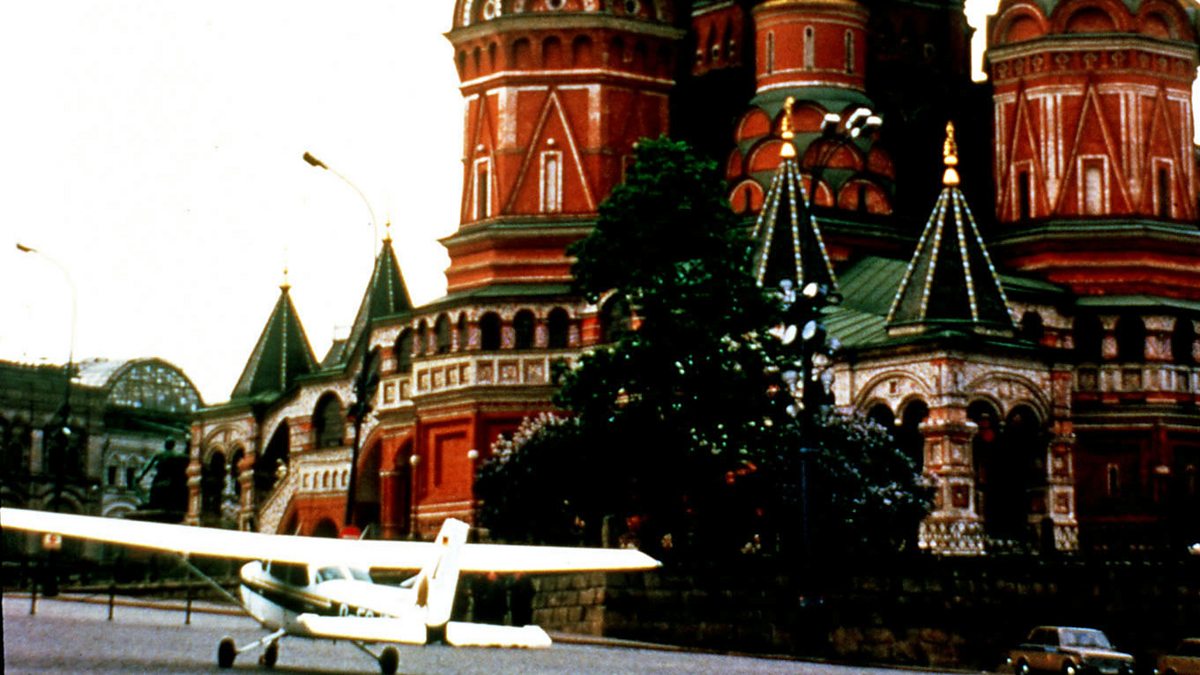
Much like Rust’s Skyhawk, the January balloon, and some of its successors, overflew some the world’s most heavily defended airspace. Alaska and northern Canada is home to the North Warning System (NWS). Activated in 1988 it consists of 44 radars stretching from Alaska, across northern Canada to southern Labrador in the northeast of the country. The radars feed their imagery into the command and control centres of NORAD (North American Aerospace Defence Command). NORAD is a joint Canadian-US initiative to protect the airspace and air approaches of both countries from arctic incursions. The NWS replaced the erstwhile Distant Early Warning (DEW) line activated in 1957.
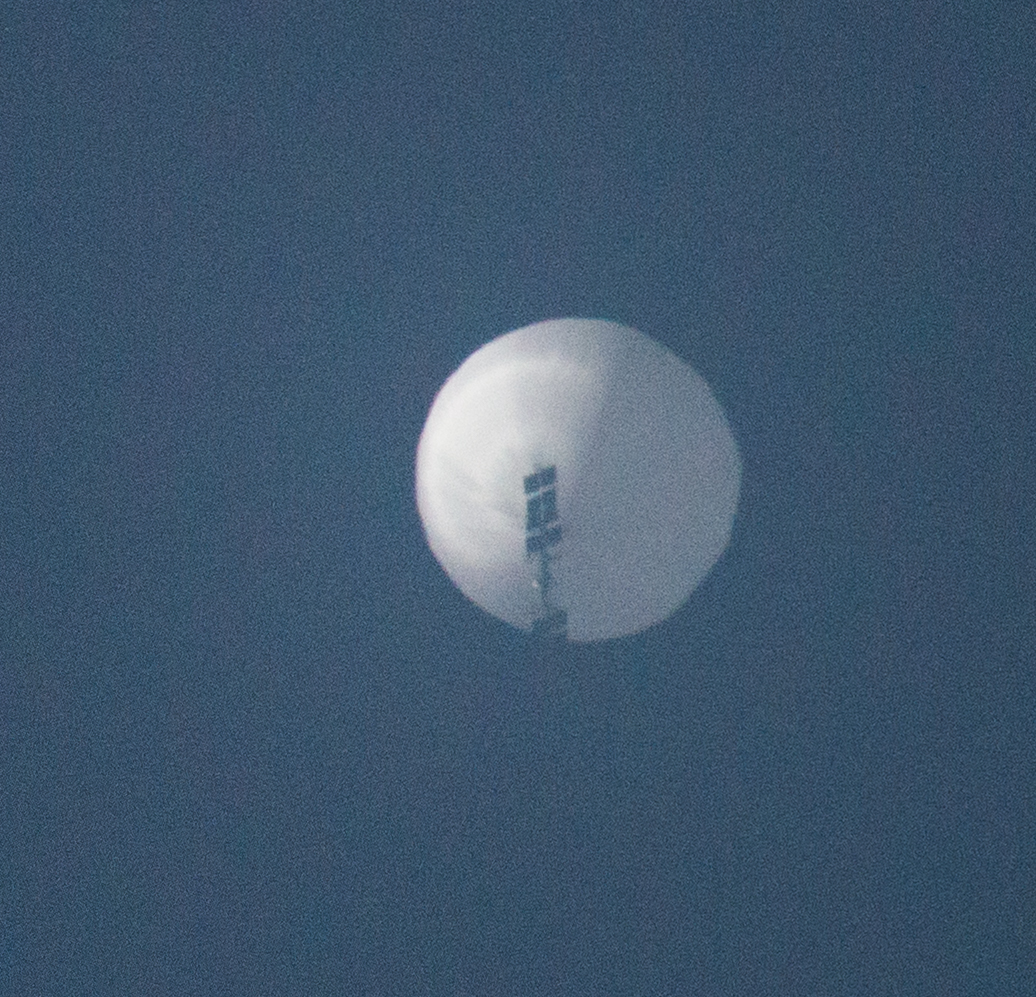
Radar Cross Section
Two radar models equip the NWS; Lockheed Martin’s AN/FPS-117 L-band (1.215 gigahertz/GHz to 1.4GHz) and AN/FPS-124 L-band (1.218GHz to 1.398GHz) ground-based air surveillance radars. The AN/FPS-117s have a range of 250nm (400km) and maximum altitude of 100,000 feet/ft (30,500 metres/m) according to publicly available sources. The AN/FPS-124 detects targets at a range of 60nm (110km) and a maximum altitude of 49,000ft (15,000m) the sources continue. The latter radar fills surveillance gaps left by the AN/FPS-117s. These radars provide a cumulative coverage of 1.536 million square kilometres (593,052 square miles) of northern Canada and the US.
General Glen VanHerck, NORAD’s commanding officer, told the media that the balloons had exposed gaps in its radar coverage. The North Warning System detects and tracks targets like conventional aircraft and air-launched ordnance. A radar’s abilities to process (detect and track) a target are dependent on several factors including the target’s Radar Cross Section (RCS). RCS determines how much of a radar’s signal is reflected to the radar after it collides with the object. RCS is typically measured in square metres. This does not correspond to the actual physical size of the target. This is because the target, particularly a combat aircraft, may have physical attributes designed to reduce its radar visibility. The fuselage, wings and tail maybe constructed from composite materials like carbon fibre. As it is electrically conductive, metal is a good reflector of radar signals. The less metal used in the aircraft’s structure, the lower the strength of the signals reflected to the radar.
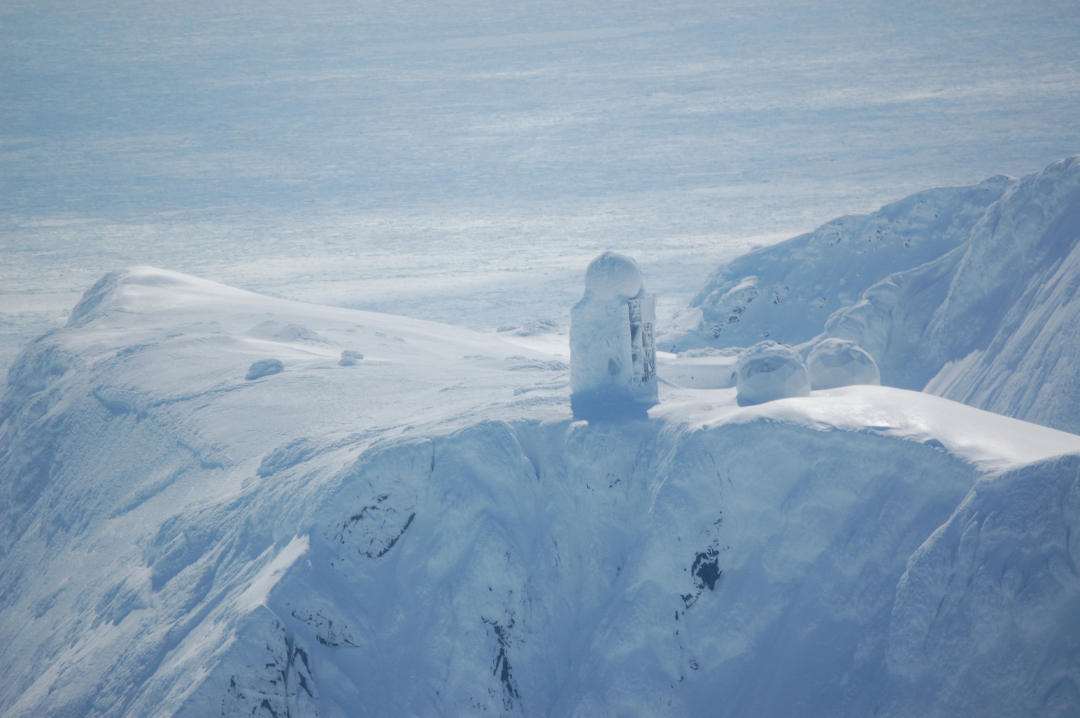
Aircraft shape will also be a factor. The design might use sharp angular surfaces to bounce signals away from the radar’s antenna. This approach is inherent in designs like the Northrop Grumman B-2A Spirit strategic bomber and Lockheed Martin F-117A Nighthawk combat aircraft. A Sukhoi Su-30MKI (NATO reporting name Flanker-H) combat aircraft has an RCS of ten square metres. This measurement can be expressed in decibels-per-milliwatt squared (dBm2). This allows us to make a comparison between the incoming radar signal, and the amount of energy returned to the antenna. Translating the Su-30MKI’s RCS into decibels-per-milliwatt squared gives a result of 10dBm2. This a relatively large signature which could make the aircraft relatively easy to detect and track. As a means of comparison, open sources say the F-117A has a 0.0015m2 RCS (-30 to -20dBm2) making it far more difficult to detect and track.
As video pictures and photos of the Chinese balloon illustrated, it was a large target. The balloon itself was said by the USAF to be 200ft (61m) tall. The fabric construction would have given a very low RCS as the material would not be electrically conductive. Nonetheless, the balloon carried a surveillance payload “the size of a regional jet,” according to Gen. VanHerck. Notionally, the payload should have had a large RCS, typically below 100m2 (20dBm2), assuming it had a metal construction. NORAD appeared to tacitly admit that the NWS radars could not detect and track this first balloon. Speaking to the media in the wake of the 28 January incident, Gen. VanHerck told reporters “with some adjustments, we’ve been able to get a better categorisation of radar tracks now.” This entailed calibrating the radars so that they could detect objects with a small RCS, travelling slowly at high altitude.
Clutter
To be fair, the balloons were not the type of target the NWS was developed to detect and track. From its inception, the system was designed for air-breathing target. These typically include conventional military aircraft or air-to-surface/surface-to-surface weapons. These targets will typically travel at several hundred knots and will fly within Earth’s atmosphere.
Radars routinely employ filters known as ‘gates’. Aircraft share the sky with birds, clouds, other aircraft and even large swarms of insects. There is an apocryphal tale from the early 1950s that a flock of geese traversing northern Canada showed up on some of the radars of the Distant Early Warning (DEW) Line. Legend has it that the birds were briefly mistaken by radar operators to be incoming Soviet bombers. As history shows, a third world war was avoided once the mistake was realised. Radar gates will be programmed to process certain targets and ignore others. For example, the gates may be set to process all targets moving at speeds of between 200 knots (370 kilometres-per-hour) and 3,333kts (6,172km/h). Thus, the radar would be tracking targets with the speeds of small light aircraft up to hypersonic missiles. The radar may be set to process all targets flying at altitudes from the radar’s horizon to 328,084ft (100,000m), the edge of space. The radar’s horizon is the measurement of the distance at which a ground-based air surveillance radar’s beam can process targets at low altitude. Thirdly, gates may be programmed to process targets with certain RCSs. These could include small surface-to-surface cruise missiles, with a circa 0.5m2 (-13dBm2) RCS to Boeing B-52H Stratofortress strategic bomber-sized targets with an RCS of circa 100m2 (20dBm2).
“He who defends everything defends nothing,” was a maxim of Frederick II, King of Prussia (1712-1786). Radar gates follow this principle. An operator would be inundated with spurious targets for which they had no interest, known in radar jargon as ‘clutter’ if they did not use these filters. This lets them focus on the targets they need to find and track. Put simply, the Chinese balloon may not have fall within the speed, height or RCS criteria used by the NWS radars.
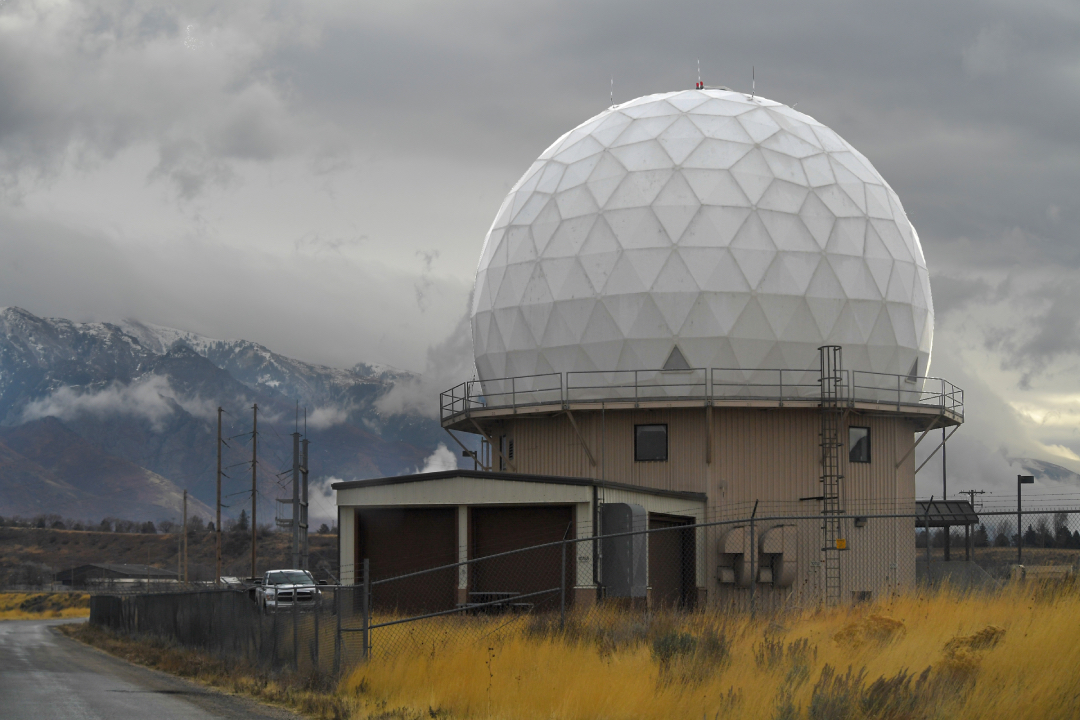
Modernisation
Changes are afoot regarding the NWS. A modernisation programme has been in the offing for some time. As Gen. VanHerck said in August 2021, the NWS was primarily designed to detect “bombers flying at 36,000ft (10,972m) that had to fly over the homeland to drop a gravity (nuclear bomb).” The threat now has changed. The Russian Air and Space Force operates supersonic strategic bombers like the Tu-160M (NATO reporting name Blackjack). These hit speeds of 1,333kts (2,468km/h) and cruise at altitudes of 52,000ft (16,000m). Russia’s Kh-47M2 Kinzhal (NATO reporting name Killjoy) is a nuclear-armed air-launched ballistic missile. Open sources say it has a range of 1,799nm (3,333km) a top speed of 8,000kts (14,817km/h). The question must be asked whether the NWS can reliably process such threats?
Both the Canadian Department of National Defence (DND) and NORAD were contacted during the preparation of this article. No reply was received from the latter. The DND did provide a written statement. The NWS is to undergo a major enhancement via the Northern Approaches Surveillance System (NASS) initiative. “This (represents) a dramatic improvement over (the) existing 30 year-old NWS,” said the statement, emphasising that the NWS “was not designed to detect modern weapons and delivery systems such as long-range cruise missiles and hypersonic missiles.”
The NASS will be built around one Arctic and one Polar Over-the-Horizon (OTH) radar. OTH radars work differently from their conventional counterparts. The latter sends a radar signal which follows a straight line until it hits a target and is bounced back as an echo. The distance the radar can ‘see’ in this straight line is a result of the height of the antenna above the ground and the angle it is pointing towards the sky. A person standing on a hill tilting their head will see further than someone standing in a clear patch of flat land at sea level looking straight ahead. Eventually, Earth’s horizon gets in the way and the latter individual can see no further. The person on the hill has an advantage, but likewise their gaze will eventually go off into space.
An OTH aims its transmission at the ionosphere. This is a patch of the atmosphere between 26nm (48km) and 521nm (965km) above Earth. High Frequency (HF) radio signals of three megahertz/MHz to 30MHz cannot penetrate the ionosphere and are bounced back towards Earth. If the radar’s antenna aims its signal at an angle towards the ionosphere, the signal will bounce off at an angle. This is much like a snooker ball bouncing off the table’s cushion. Anything in the way of the signals will reflect them back to the radar. This enables an OTH radar to look several thousand miles beyond the horizon and detect and track targets there, providing obvious early warning advantages.
The statement said that the Arctic OTH will be positioned on the Canadian-US border providing surveillance up to the Arctic circle. The Polar OTH will provide coverage across the northern reaches of the Arctic: “This will greatly extend the range of radar early warning in Canada’s northern approaches in comparison to current capabilities provided by the North Warning System,” the statement continued. The DND said that it “will work with the United States to develop a complementary network of sensors with classified capabilities, distributed across Northern Canada, as another layer of detection.” No further details have been provided regarding the classified capabilities. It is possible this might include replacement radars for the NWS with the capabilities to detect and track targets like the recent balloons.
There is no word on which companies might provide these radars, although it is safe to assume it will probably be a North American-sourced solution. Australia has experience of HF OTH radars in the guise of its Jindalee Operational Radar Network (JORN). Might this be a potential template for the Arctic and Polar OTH radars? Both Lockheed Martin and BAE Systems have experience working with JORN. Similar expertise could be found in Raytheon and Northrop Grumman’s acumen. The DND said that no specific costings are available on the potential costs of these programmes. That said, it estimates spending at least $5 billion between now and 2041/42 on the overall modernisation. This investment is timely. Tensions are unlikely to diminish in the high north of North America any time soon as the escapades of Chinese balloons make clear.

by Thomas Withington












